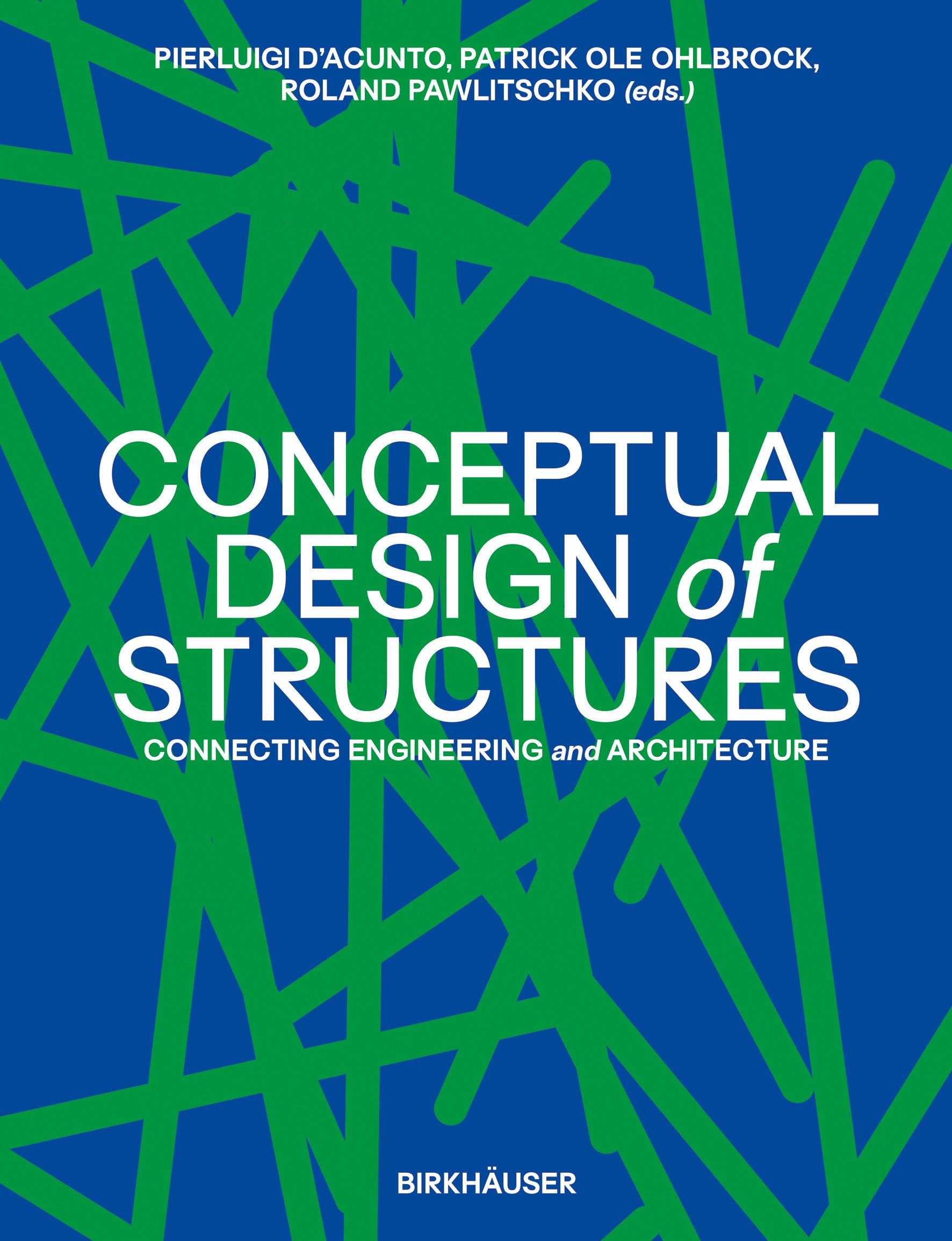

CONCEPTUAL DESIGN of STRUCTURES
PIERLUIGI D’ACUNTO, PATRICK OLE OHLBROCK, ROLAND PAWLITSCHKO (eds.)
CONCEPTUAL DESIGN of STRUCTURES
CONNECTING ENGINEERING and ARCHITECTURE
CHALLENGING GRAVITY
KAI-UWE BLETZINGER, ANN-KATHRIN GOLDBACH AND REZA NAJIAN
PATRICK OLE OHLBROCK, GIULIA BOLLER, AND PIERLUIGI D’ACUNTO
JÜRG
LEARNING FROM THE PAST
MARIO RI NKE
136 PREFACE
THORSTEN H ELBIG AND FLORIAN MEIER
138 MATERIAL TECHNOLOGY AND SUSTAINABILITY – VISIBLE AND INVISIBLE INFLUENCES TO INNOVATIVE STRUCTURAL FORM
TULLIA IORI
146 TELL ME, PROF., WHAT IS THE USE OF THE HISTORY OF CIVIL ENGINEERING?
INTERVIEW WITH BJØRN NORMANN SANDAKER AND JOSEPH SCHWARTZ
154 A CONVERSATION ON STRUCTURAL ENGINEERING, ARCHITECTURE, AND EDUCATION BETWEEN SWITZERLAND AND NORWAY
INTERVIEW WITH AURELIO MUTTONI AND ROBERTO GARGIANI
162 TEACHING CONCEPTUAL DESIGN OF STRUCTURES TO YOUNG ENGINEERS AND ARCH ITECTS
COMMON RESPONSIBILITIES
CATHERI NE DE WOLF
172 PREFACE
INTERVIEW WITH KNUT STOCKHUSEN
174 CONCEPTUAL DESIGN FOR REUSABLE INFRASTRUCTURES
INTERVIEW WITH ELLI MOSAYEBI
182 THE INTERDISCIPLINARY NATURE OF ARCHITECTURE: CHALLENGES AND OPPORTUNITIES BETWEEN ACADEMIA AND PRACTICE
MIGUEL F ERNÁNDEZ RUIZ AND DUARTE M. VIULA FARIA
192 THE ROLE OF ENGINEERING AND CONCEPTUAL DESIGN ON SUSTAINABILITY
INTERVIEW WITH LEE FRANCK AND JANE WERNICK
198 RESPONSIBILITIES OF CIVIL ENGINEERS IN SOCIETY
MARIO RI NKE
204 CONCEPTUALIZING STRUCTURAL PERMANENCIES
214 AUTHORS
220 IMAGE CREDITS
In the early stages of the design process, the function and form of a building are roughly outlined and formulated. However, the importance of the concept is often overlooked, even though it forms the basis of our building culture. Even technically brilliant designs can fail in later stages if a coherent and well-thought-out concept was not developed in the early design phase – some fail during construction, some during operation, and some only when the building has reached the end of its life.
Conceptual design primarily provides a conceptual framework for how a building will be implemented visually, structurally, constructively, and technically. The conceptual design describes the idea and intent at its core. It is the overarching plan, and the execution is the corresponding follow-up. Both steps are interdependent. The key to conceptual design lies in the search for balance – the integration of the aspects architecture, construction and engineering. It is about finding the harmonious relationship between conditions and requirements. In the search for equilibrium between polarities and dualities, designers look for a holistic approach to achieve the balanced goal – the building. It is about the interplay between aesthetics and functionality, tradition and innovation, material and atmosphere. It’s about creating a solution in which all elements harmonize with one another and the result is ideally more than the sum of its parts.
The speakers at “The International fib Symposium on Conceptual Design of Structures 2021” and the authors of this book understand and embody these principles of balance and synthesis. They demonstrate the thoughtful and cohesive design behind a building and the issues and challenges that arise. It is about the balanced application of computer-aided calculation methods, which often only suggest accuracy and should be supplemented, if not replaced, by handwork and conceptual thinking. It is also about dialogue and collaboration between architects and engineers. The interaction between spatial structure and structural framework is explored. Intangibles play as important a role as the history of the building and the topographical, landscape or urban context. Likewise, the process of form-finding is influenced by historical and material development, as is the interweaving of the work of generations of engineers and the history and evolution of the conceptual design of buildings themselves. Responsibility to society and ecology is always emphasized – the adaptability of structures and their functional variability as “load cases.” The central role played by the pursuit of the right measure and balanced design becomes clear, and one can see how it con -
tributes to the success of high-quality construction, and thus to building culture. This is why the “strong” spatial and structural design of the Kiesoffenhalle on the Attisholz site was the ideal venue for “The International fib Symposium on Conceptual Design of Structures 2021.”
This book combines practice, research, and education, linking these areas in a cycle that allows knowledge and experience to grow reciprocally. This book is not a typical record of the conference proceedings of the “Symposium on Conceptual Design of Structures 2021,” but instead embodies the spirit of the evolution of the symposium and the succeeding exhibition. The content of the book condenses the underlying dialogues and the discursive phases in between the papers and contributions, which only hint at the layers required for Conceptual Design to be revealed. The selected articles provide a comprehensive, but by no means exhaustive, understanding of Conceptual Design for buildings. You – the readership with a strong affinity for building design – will hopefully be inspired to appreciate this important and complex phase of the design process by immersing yourself in the world of Conceptual Design and the variety of thoughts and ideas that can lead to remarkable concepts and appropriately executed structures.
With this in mind, the Society for Structural Engineering, as co-organizer of the symposium and supporter of the book project, wishes you an inspiring read.
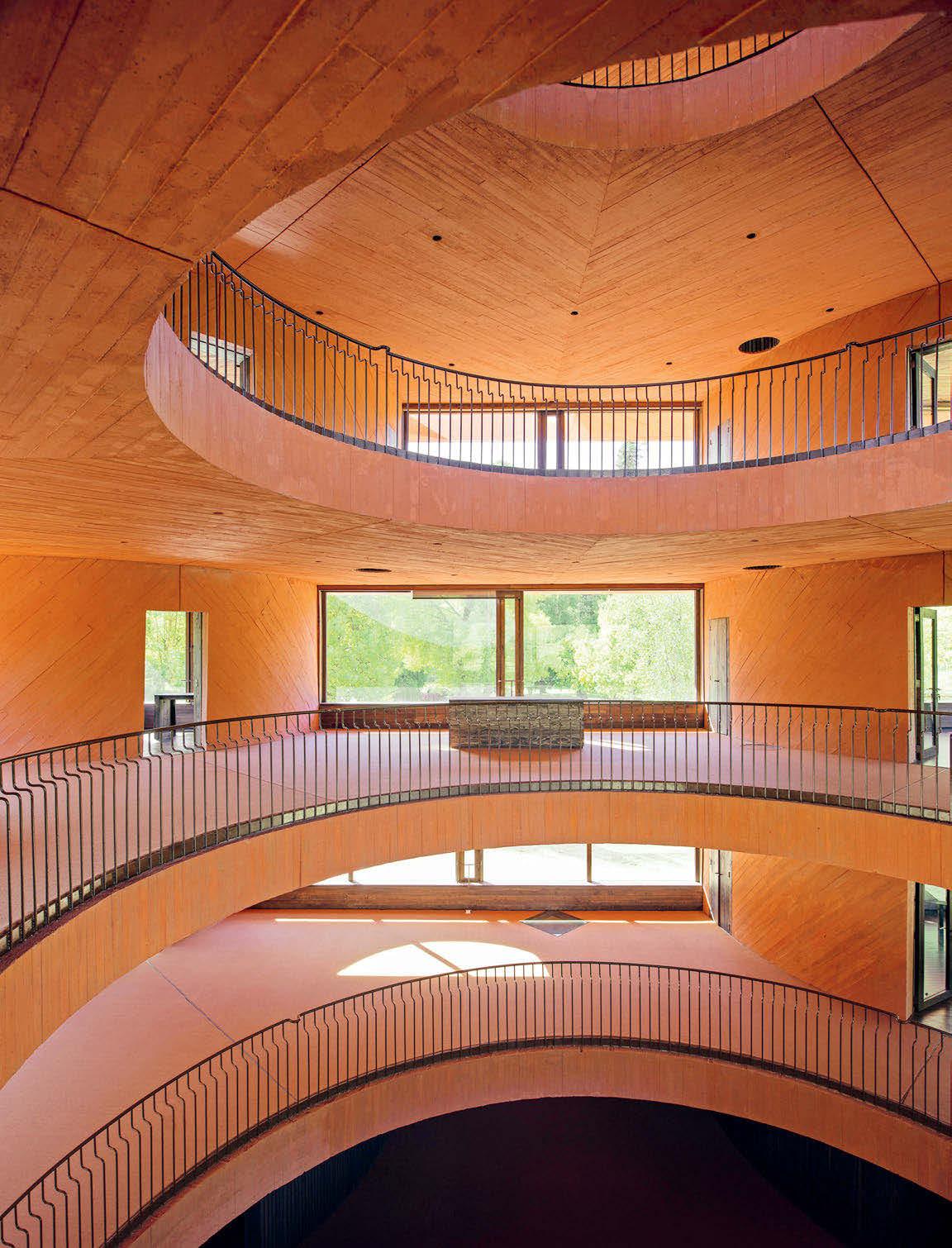
PIERLUIGI D’ACUNTO PATRICK OLE OHLBROCK
MIGUEL FERNÁNDEZ RUIZ
ON THE CONCEPTUAL DESIGN OF STRUCTURES
1 Arup, O.: (1986) Ove Arup & Partners, 1946–1986, Academy St. Martin’s, London –New York , p. 9.
Science studies particular events to find general law. Engineering makes use of these laws to solve particular problems. In this it is more closely related to art or craft; as in art, its problems are underdefined, there are many solutions, good, bad, or indifferent. The art is, by a synthesis of ends and means, to arrive at a good solution. This is a creative activity, involving imagination, intuition and deliberate choice.
— Ove ArupThe deliberate creation of objects in our environment profoundly influences both the quality of our individual lives and the functioning of society as a whole. The ability of designers to produce impactful, effective, innovative, and inspiring designs holds immense significance for all of us. Central to the design process is conceptual work, the stage at which pivotal decisions are made that ultimately shape the outcome of a project. As highlighted by Ove Arup 1 in the context of engineering, this process defies scientific formalization and eludes precise definitions.
This book offers a pathway for investigating shared traits in the conceptual design of structures, while also providing valuable insights from accomplished artists, architects, and engineers. By delving into their diverse perspectives, projects, and reflections, we arrive at important lessons on understanding, implementing, and teaching this invaluable topic. The following reflections encapsulate our understanding of the conceptual design of structures and serve as a stepping stone for exploring the contents of this book.
An interplay between space and structure
At its core, the conceptual design of structures relies on the inherent relationship between space and structure. During the initial stages of design, the focus is not solely on achieving structural efficiency or material integrity; instead, it is a question of discovering synergies that transcend traditional disciplinary boundaries. This approach acknowledges that the conceptual design of structures goes beyond technical considerations and encompasses a broader exploration of spatial relationships and human perception. We believe that load-bearing elements should not be viewed as mere technical requirements, but as opportunities to define spatial and formal concepts. Comprehending the inherent physical logic of a load-bearing system allows the structure to be used to reinforce and define the overall design. This perspective highlights the potential for the structure to become an integral part of the architectural vision.
Arranging load-bearing elements in space requires a careful balance of architectural considerations and structural demands. The goal is to harness the architectural possibilities offered by these elements while simultaneously safeguarding their structural performance. An exemplary illustration of this holistic approach is the INES Innovation Center, collaboratively designed by architects Mauricio Pezo and Sofia von Ellrichshausen and structural engineer Luis Mendieta [PAGE 8] . In this project, the spatial configuration of the curved walls located at the four corners of the floor plan and the alternating openings in the slabs create a distinct spatial experience throughout the building. The use of curved walls not only regulates the spans of the slabs but also facilitates the creation of open and intimate spaces while providing lateral stability to the entire construction.

ENGINEERING AND ART – MOVING FORWARD TOGETHER
WILLIAM “BILL” BAKER, ALESSANDRO BEGHINI AND JANET ECHELMAN IN CONVERSATION WITH ROLAND PAWLITSCHKO
RP SOM and Janet Echelman have realized some very exciting projects with net structures, through a collaboration that goes back several years. What was the first project, and how did you get together?
AB We met Janet more or less coincidentally in 2013 while working on a project in West Hollywood, where we were designing and engineering a building complex with two hotel towers [PAGES 32, 36 TOP, 38] There was a requirement for a piece of public art as part of the development, and our client hired a curator who engaged Janet to be the artist for a work that would be suspended between the two towers. At the same time, we were doing a deep dive on graphic statics and on the geometry of equilibrium – topics which also relate to Janet’s work. We are still very interested in understanding the geometry of equilibrium, and Janet’s art is a kind of vehicle to do that. Her artworks are beautiful sculptures, but also beautiful structures.
JE From the time I was selected to create this artwork, I began meeting very regularly with SOM’s structural engineering team of Alessandro Beghini, Mark Sarkisian and Bill Baker. I already had a conceptual artistic idea: I wanted to create a dream catcher inspired by what we know about the state of dreaming. So I began research on the mapping of brainwave activity during periods of REM sleep and dreaming, and at the same time looking at the craftsmanship of Native American dream catchers, which can consist of many structural layers.
RP Janet, can you tell us more from your perspective about the design process with the engineers?
JE I found our exploration process exhilarating. SOM would share a wide variety of possibilities of what the structural layers could look like, and where they could be positioned with respect to the building. I started to sketch various ideas and send them back to Alessandro and Mark. They did markups on top of my drawings to show what worked or what had to be changed. After receiving SOM’s sketches, I redrew and redraped the forms with a new geometry. We finally had four vertically stacked structural layers. This was
the first time I had done a multilayered structure, which opened up a whole new range of aesthetic and expressive opportunities.
What’s been unique for me in working with SOM is that we have a genuinely collaborative process. We are both pushing ourselves forward in order to open new doors and find the most elegant solutions to simultaneously achieve our aesthetic and structural goals. It’s a very iterative and collaborative process.
RP Alessandro, can you describe the structure of the Dream Catcher in brief?
AB Principally, in the sculptures we have designed together so far, we are dealing with a horizontal structural layer of ropes and the colorful sculptural nets draped underneath. The uniqueness of the Dream Catcher is that some of these colorful nets are hyperbolic paraboloid forms connecting two structural net layers. This creates a direct relationship between all four layers, which are positioned at different heights between the two supporting towers, making the structural behavior more difficult to simulate. Wind forces do not just affect one structural layer; the wind is tensioning and slackening all of the layers in different ways. We did a number of numerical simulations just to understand how the forces would be redistributed on the different structural layers and how each would perform overall. We very quickly realized that we were dealing with very complex engineering challenges.
BB The way we form-find the geometry is reminiscent of the Olympic Stadium in Munich and of the methodologies established in the 1970s that are still valid in a way – for example, force-density. When you look at these roof structures, you’re seeing a representation of the forces at the same time. You see the beauty of an honest structural expression. It’s similar with the Dream Catcher: This structure shows very pure shapes and forms with so many layers, also intellectual ones. And the thing is, it’s completely honest; you can’t cheat at all.
RP Janet, you first worked with bronze-casting, but later became drawn to knotted fiber mesh. Why

TOP Dream Catcher, West Hollywood, California, USA, 2017. This overview plan shows how ropes and nets are connected. When looking at the structures, one simultaneously sees the forces.
BOTTOM Earthtime 1.26, Munich, Germany, 2021. The connections are part of a craftmanship that goes back to the traditional way of the marine industry to splice a rope. For the realization of the project, existing technologies to produce ropes and nets were used.
engineering research endeavor. And we’re also collaborating with scholars at MIT, Caitlin Mueller and John Ochsendorf, to develop new computational design tools that will enable us to design aesthetically while understanding how to keep the structure in equilibrium.
RP What material are the ropes in your artworks usually made of?
JE My earliest sculptures were made of dyed cotton and silk. Today, we are using a variety of highly engineered fibers: Aramid fibers, UHMWPE (Ultra high molecular weight polyethylene) with a physical polyester sleeve as a UV-protection, PTFE (Polytetrafluoroethylene), or high-tenacity nylon, because of its expressive range of color. We work with material engineers in the development of those fibers and their structural and color potential. The different color impressions are created by the combination of physical color within the yarns combined with projected colored lighting at night.
RP How does SOM determine the structural design of the sculptures?“
AB Regarding the form-finding software for the structural net, we use a code developed in-house that leverages the API (Advanced Programmer Interface) of existing structural software. The form finding process is based on the force density method. The code was developed using Matlab and reads and writes data from the S-Frame structural software. The S-Frame software is then used for the analysis of the structural ropes for the sculpture. The form finding of the sculptural net is done with a different custom piece of code that interfaces with Rhino for the input/output. The structural net software is completely different from the custom proprietary software Janet’s studio developed to design her net sculptures. Basically, our models are precisely about the structural properties and behavior of the ropes, while Janet’s models characterize the visual appearance of the sculpture.
RP Is the arrangement of the structural ropes only possible in the way ultimately executed, or is there also some room for variation here?
AB Janet’s studio has collaborated with computer scientists and engineers to develop custom software that can simulate the soft-body dynamics of the sculptural net materials with a high degree of physical accuracy. The latest version of this software is capable of simulating nets with millions of small segments very quickly, allowing for rapid iterations and fine-tuning of the sculptural forms. The software also incorpo -
rates the constraints of the fabrication process in the simulation, including twine diameter, stiffness, weight, and specific looming constraints. This restricts the input parameters of the simulator to help ensure all the form-found nets are also buildable.
Regarding the structural net material, we typically use either single braid ropes (e.g., plasma 12 strand) or double braid (e.g., DV composite). For the rope arrangement, there are multiple solutions. However, every solution is defined by several rules. Some connections are very hard to fabricate. For example, it is hard to splice four ropes together at a single point. And the “cells” in the structural rope layer should not be triangular, but polygonal, to provide more geometric adjustability during installation. The cells can be a four-sided or a five-sided polygon. A triangle is very hard to stretch and has no flexibility, while a polygon gives you a lot of flexibility and adjustability. Steel ropes can be accurately sized and manufactured in precise lengths, and their static properties are also very well known. In contrast, the ropes of Janet’s sculptures are hand-spliced, and their fabrication is very different from steel cables. In this manual fabrication process, the final rope lengths can differ from the design by several centimeters, so we need to account for adjustability in the design.
RP How are the nets manufactured and finally built up on site?
AB The net parts of the sculpture are machine-loomed. The sculpture is produced in panels that are assembled to create the net shape. In order to hang these pieces, you need a sister line, which is a smaller rope that is attached to the structural rope. In the fabrication facility, everything is joined, so when the sculpture gets to the site it consists of a single piece. The net is spread on the ground and lifted with one or more cranes. It’s as simple as that.
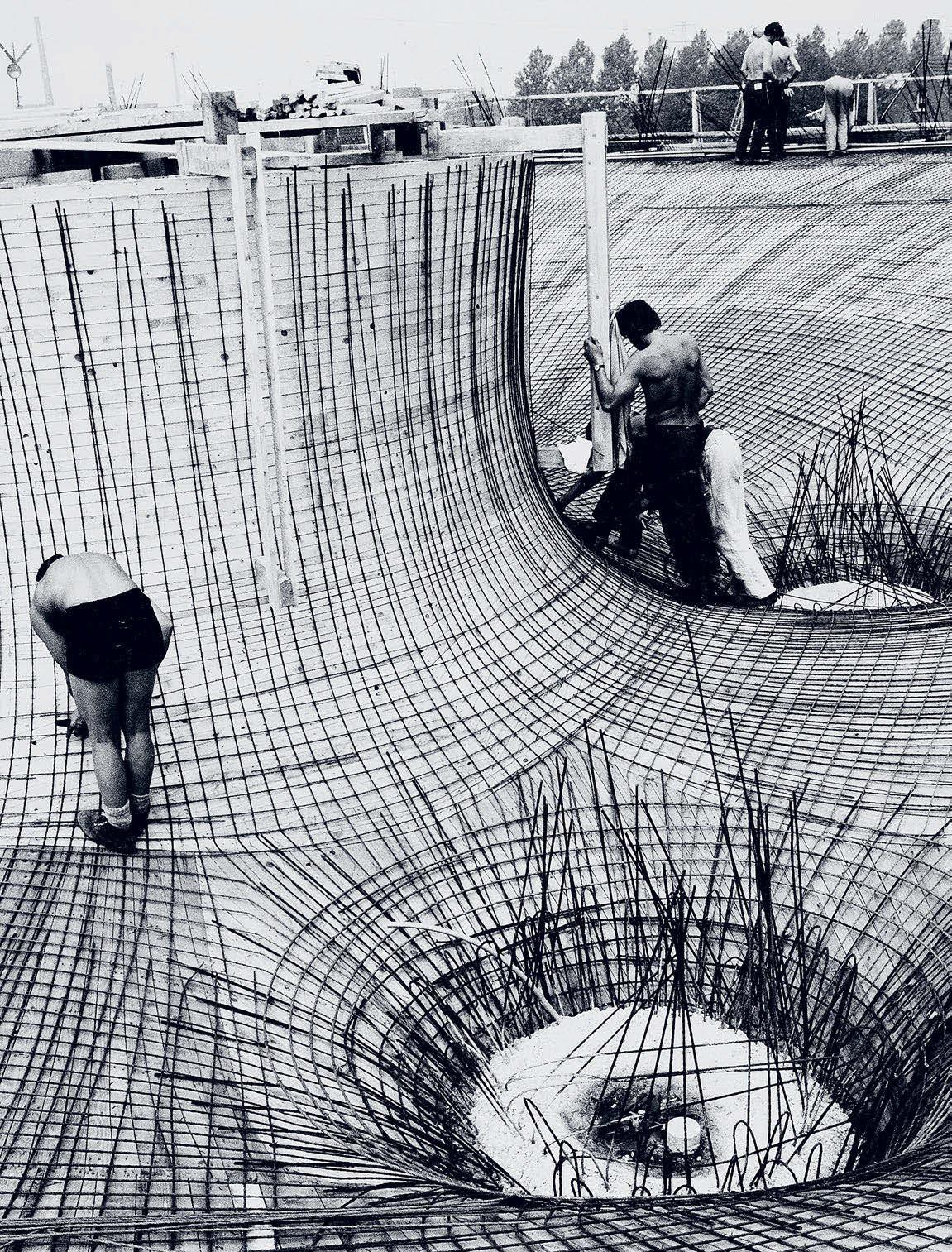
THE SIMPLE, ELEGANT FLOW OF FORCES
CHRISTIAN MENN AND STEFAN POLÓNYI IN CONVERSATION WITH JOSEPH SCHWARTZ AND HIS TEAM
On December 7, 2010, Prof. Joseph Schwartz and his team invited the two engineers Christian Menn and Stefan Polónyi to ETH Zurich to take part in a joint discussion. In February 2007, Schwartz had taken up the chair for structural design at the Department of Architecture and had developed a radical new foundation course based on the methods of graphical statics, which aimed to achieve an understanding of structural design based on geometry and proportions, instead of structural typologies. This new, core teaching philosophy was intended to impart an intuitive, but nevertheless precise understanding of forces that went beyond calculation, which explicitly brought structural and architectural issues together. Three years since the start of this new course, this talk was an opportunity to interrogate the requirements and possibilities of an interdisciplinary structural design.
This interview has been abridged and edited for legibility by Mario Rinke.
JS First of all, I would like to thank you both for coming here today. Today we want to talk about what the teaching of structural design can mean in the teaching of architecture. Here at the department, we were convinced from the beginning that this shouldn’t be about teaching architecture students how civil engineers work, but rather imparting to them a feeling for structures in the context of the building in general. We want to teach them how to visualize forces and thus make it possible to reconcile form and internal forces. As a result, decisions can be made as early as the concept stage that guide the further course of the design. There is then actually no need for precise calculations to prove something that already did not work in their basic assumptions. To enter the discussion, I would like to ask you both: What comes to your mind about the engineer-architect collaboration, what can it mean?
CM I would like to start with a question. Are your backgrounds more in architecture or engineering?
JS We’re from both sides. Most of us come from architecture, some of us have backgrounds in both. We try to have a certain balance.
CM I would perhaps like to say something. In my view, we have a kind of axis: one side is science, and the other is art. And I have the impression that the engineers want to become ever closer to science and the architects to art. This means they are drifting apart, and that is basically wrong. The two approaches should be brought together.
It’s wrong to assume that in science we should become ever more exact. A bridge, for instance, is to be placed in an environment. This primary condition is topography and geology. And there, you have to ask yourself how to arrive at a load-bearing system which could fit in that place and would have great potential with respect to its appearance and cost. Once you have that, then you can begin with the bridge. I think it’s different in architecture. Architects want to make something that comes from their minds. In other words, to create something. But I have the impression that engineers aren’t in fact authors but translators. When we make invisible forces visible through their efficiency, then that leads to a good solution. And then you go from a load-bearing system to a load-bearing structure, in which these forces are visualized. Equilibrium simply means balance, harmony, etc., that is what appeals to us.
SP There is a very important phrase that we should return to. And that is “making the invisible visible.” I would also like to set out a brief history of our profession. Building statics truly began with the lectures of Navier in 1823. 1 Before then, we had built very beautiful things through direct experience. From this point on, we had a theory which allowed us to go beyond direct experience. This meant that structures could be built for which calculations could be made. We engineers then had a repertoire of structural systems, and we later tried our best to adapt them in architecture.
Now, with the finite-element method and computers, we can calculate everything. Architects make the
1 Claude-Louis Navier (1785–1836) was a French mechanical engineer. He directed the construction of several bridges and was professor at both the École Nationale des Ponts et Chaussées and the École Polytechnique. Navier developed the general theory of elasticity in a mathematically usable form and connected it, for the first time, to the field of construction. In 1826 he established the elastic modulus as a property of materials independent of geometry. Navier is, therefore, considered to be the founder of modern structural analysis.
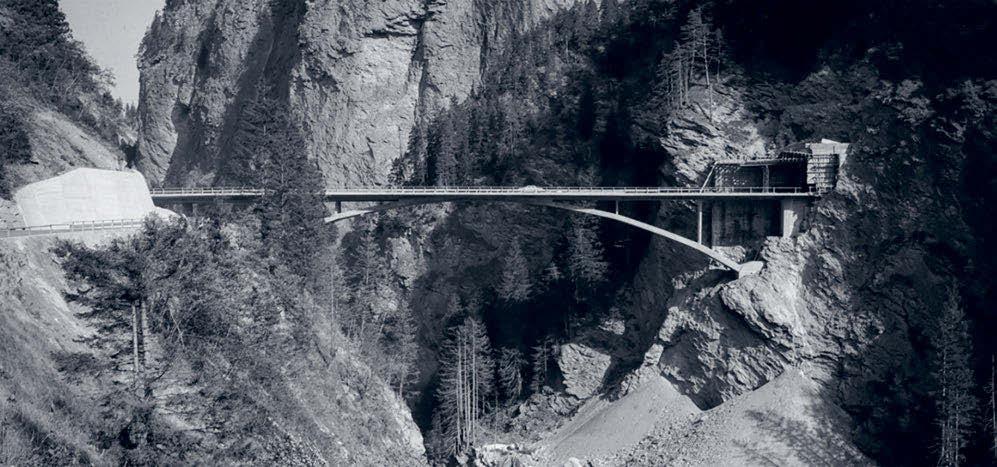

TOP Viamala-Brücke. Zillis-Reischen, Switzerland, 1967
Structural design and engineering: Christian Menn
BOTTOM Ganterbrücke. Ried-Brig, Switzerland, 1980
Structural design and engineering: Christian Menn
CM Yes, you can’t build a suspension bridge with pylons over a small stream. Scale is a fundamental principle.
JS But the design, these first conceptual ideas, where does it come from?
CM Of course, that has already been considered. One wants to make a structural system that has a high potential, both in appearance and economy. And this balance is, once again, dependent on the surroundings. Will you see the structure, or is it hidden somewhere, or is it a site with historical significance? All of that has to be taken into account.
JS Fundamentally, it is always a process, one which involves decisions. At the outset, there’s the basic question of what type of bridge it should be: a beam, cable-stayed, suspension, or an arch. That is surely the main question that has to be answered at the beginning, more intuitively rather than scientifically, don’t you think?
CM Well, when I think now of the Sunniberg bridge, for instance, the proposals that we had at the outset were essentially completely normal designs: pillars with a beam on top. And it couldn’t be too expensive. A balance always has to be struck between appearance and economy. The bridge that stands there now was a good 15% more expensive than the cheapest possible solution.
JS But the choice of a cable-stayed bridge was decisive.
CM Yes, the decision in favor of such a bridge came from the fact that such a design would result in a more transparent bridge across the valley, blocking less of the view. This choice was a little more expensive. The rest came naturally – for that, we were simply translators.
JS The rest of the chain of decisions concerned constructional and technical aspects.
CM Yes, absolutely. We always chose the simplest way possible. If the towers are splayed a little, it was because straight towers would cause the cables to clash with the structural clearance of the curved bridge. It doesn’t have any joints or bearings, so it doesn’t have to expand along its length, but instead expands laterally. But then you can’t use full-width solid piers, because they are too stiff. So you make a kind of Vierendeel truss instead.
JS How do you see the possibilities of imparting this feeling for structural form to students?
CM I just think that being able to develop a simple, elegant distribution of forces in a building is something that is in itself beautiful. Like in your school building [in Leutschenbach], where it goes back and forth until it reaches the ground. 3 Not everyone would see that flow of forces as simple, but it is very elegant.
JS One has to say that the load-bearing structure as it was ultimately built came from the fundamental consideration of stacking, which emerged from the first concept sketches we made together. The structural idea was only made sharper in the course of the project.
SP I might also bring up a particular example, from one of my many collaborations with Ungers. 4 When I worked with architects, I never spoke about structural problems, only about architecture, about their architecture. With the project for the Baden State Library, for instance, there were many functions arranged on top of one another. When the architects wanted to have a downstand beam to transfer the loads, I tried to talk them out of it. But I didn’t tell them that I didn’t want a downstand beam. Instead I talked about their architecture. Underneath was the parking area, and so I began to talk about the arrangement of parking. And in the end, the columns were aligned neatly on top of each other. It’s something you can teach students early on: to develop floor plans which don’t require transfer beams.
JS Why do you object to transfer beams so strongly?
SP Such beams don’t belong in slab and column structures. All you should have there is columns and horizontal or vertical slabs, that should be enough. You shouldn’t need a downstand except in an emergency. The downstand belongs to timber frame construction.
JS It’s a question of appropriateness.
SP With an architect-designed building, you should be able to insist that something like that shouldn’t really be possible.
JS What remains difficult are the different ways of thinking, the different language present in the two disciplines. We are always asking ourselves how we could make progress in that respect.
3 Leutschenbach school building in Zurich (2009) by the architect Christian Kerez and engineer Joseph Schwartz.
4 Oswald Mathias Ungers (1926–2007) was one of the most important German architects of the postwar period.
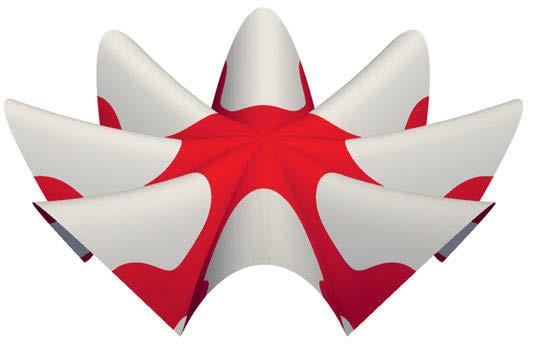
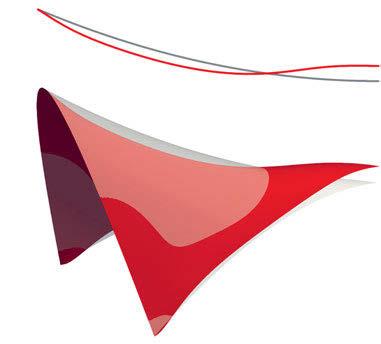




8 Mohammadi, B., Pironneau, O.: (2010) Applied Shape Optimization for Fluids, Oxford University Press.
9 Jameson, A.: (2003) “Aerodynamic shape optimization using the adjoint method,” in B. Von Karman Institute (ed.), Lecture at the Von Karman Institute, Brussels, Belgium.
LEFT PAGE, TOP Models of the original shell (grey) and the optimized one (red)
LEFT PAGE, CENTER Magnitudes of displacement, original (left) and optimized (center); filter technique applied to find the optimized thickness distribution (right).
LEFT PAGE, BOTTOM L’Oceanogràfic, Valencia, Spain , 2002. Architecture: Félix Candela
The Valencia “Candela” shell was the last structure Félix Candela was involved in creating.
coordinates collected in x, (2, left). In the case of equal numbers of control and coordinate numbers the operation may be inverted (2, right) with implicit filter matrix à :
(2) explicit filtering: x = As implicit filtering: s = A –1 x = Ã x
As an example, the implicit filter matrix à may be defined as:
(3) Ã = I – εΔ
with the unit matrix I , the Laplace operator Δ and some scalar ε which is equivalent to the filter radius, all together defining what is known as Helmholtz filtering or Sobolev smoothing. 8, 9 The Laplace operator Δ applied to the geometry in terms of x represents the surface curvature properties. The result is the smoothing of the (unwanted) geometric “waviness” and ε , equivalent to r, as a measure of the wavelength. The convincing property of the implicit version of filtering is that boundary conditions of the generated shape x can be directly controlled compared to the explicit one. Without further explanation, one can imagine that there also exists a continuous equivalent filter function à to correspond to the implicit filter matrix Ã
The following examples are created by using explicit and implicit filtering – in the case of implicit filtering, eventually together with filter functions spanning the complete structure, thus controlling the overall continuity of the shape together with the boundaries. The choice of ε or, equivalently, the filter radius r is the design handle for form finding, steering the result to its respective solution.
Aside from the tremendous amount of mathematics in the background of the method, it is the simplest and most straightforward method to apply. All it needs is a finite element model of the structure as output of common CAD pre-processors. It must be fine enough to be undistorted and able to resolve the smallest expected curvature radii of shape. Pragmatically, it is better to choose a finer mesh than the minimum necessary. Every node of the mesh may move during form finding. This defines problem sizes with the number of optimization parameters as the number of mesh nodes multiplied by the number of coordinates at every node. Obviously, this gives very large numbers, which, however, can easily be treated as a consequence of the indirect control of geometry by the control field s and the filter idea. Refer to [PAGE 73, BOTTOM] and estimate the size of the relevant problem. What remains are the choice of filter functions (typically either explicit or implicit) and the size of the filter radii as control handles. For the following examples, very fine meshes are used. Typically, they are not shown because they do not give additional information. The filter sizes are not reported in absolute numbers. They are chosen to be large enough to give the displayed results. Since shell structures are most effective in transferring loading by an infinite number of alternative load paths, a related and also infinite number of optimal shapes exists. Consequently, the choice of a filter radius or, eventually, a certain distribution of filter radii (e.g., smaller at the edges, larger in the interior to allow stiffened edges with locally larger curvature) decide the result of the form-finding process. The idea of this paper is to demonstrate stages of a typical design procedure: (i) Take any filter and filter radius, set up the optimization problem and receive a first optimal shape; (ii) discuss the quality of that shape with respect to its properties (e.g., its load-carrying principle, geometric properties, aesthetics, manufacturability, etc.); (iii) repeat the first steps as often as necessary to explore the design space to find alternative solutions;
integrated into computational methods and tools for structural design. 21, 22 Graphic statics encompasses a collection of geometry-based constructions that enable the establishment of a reciprocal relationship between the form of a structure, represented through a form diagram, and the forces acting upon and within the structure, depicted in a force diagram. 23 Ideally, computational graphic statics can combine the advantages of an explicit parametric environment where form and forces are immediately coupled and can be interactively modified by the designer with the advantages of rule-based approaches to generate topologically varying instances of form and force diagrams, in which the static equilibrium is a prerequisite of the emerging structures [PAGE 80 and PAGE 88] . Controlling and visualizing the spatial force flow is essential during the conceptual design phase, as argued by Schwartz. 24 This visualization becomes crucial in finding a balance among numerous conflicting aspects that cannot be fully captured by numerical calculations alone. Thus, graphic statics and its computational implementations can greatly facilitate the conceptual design process, as exemplarily demonstrated by the Armadillo Vault project 25 [PAGE 84] and the Goián – Cerveira Footbridge over the Miño River project. 26 [PAGE 87]
Artificial Intelligence for the conceptual design of structures
Architects and structural engineers are increasingly recognizing the potential that Artificial Intelligence (AI), particularly Machine Learning (ML), holds for conceptual design. 27 Unlike traditional algorithms that rely on explicitly defined relationships between input and output, ML algorithms work differently. They learn these relationships directly from input and output data, uncovering complex patterns and correlations between them. This data-driven approach allows them to generalize and make accurate predictions or decisions based on previously unseen data, making them powerful and versatile tools for various applications. 28 In this way, computers are no longer just used for simulation and optimization but are increasingly becoming an integral part of the generative step in the design process. AI -driven generative design frameworks can autonomously create and explore design options based on given parameters and constraints, offering designers new insights and creative possibilities. Thanks to current unprecedented developments, Artificial Intelligence (AI) has started to be integrated into the standard workflows of architects and engineers. Real-world applications of ML in this context can be already found in the works of the Core Studio of Thornton Tomasseti and the Swedish start-up Finch 3D, to name a few.
One of the most promising aspects of AI integration into design is its potential to enable designers to navigate and manage complex, high-dimensional, multidisciplinary and topologically varied design spaces more effortlessly. In this context, ML-based methods like Self-Organizing Maps (SOM) have been used to capture the complexity of real-world environments by processing large streams of data. 29 PAGE 89 shows an example of an SOM of thousands of structural design options for a stadium roof that have been automatically generated by a computational form-finding algorithm. 30 SOM serves as an unsupervised ML nonlinear data transformation technique that converts data from a high-dimensional space into a more manageable two-dimensional space. With the help of clustering techniques like these, it is possible to represent complex, high-dimensional data in a way that is easily understandable. This allows designers to obtain a clear overview of all available design options without experiencing eval -
23 Kurrer, K. E.: (2008) The History of the Theory of Structures, from Arch Analysis to Computational Mechanics, Ernst & Sohn, Berlin.
24 Schwartz, J.: (2011) “Teaching”, in Co-operation: The Engineer and the Architect, Birkhäuser, pp. 243–249.
25 Block, P.: (2016) Beyond Bending: Reimagining Compression Shells, DETAIL Verlag.
26 Bernabeu, A., Mateo, J., Ruiz, F., Colmenero, G.: (2022) Goian – Cerveira Footbridge over the Miño River. Spain – Portugal, Proceedings of Footbridge 2022: Creating Experience, Madrid, Spain
27 Carta, S.: (2021) Self-Organizing Floor Plans , Harvard Data Science Review 3(3).
28 Málaga-Chuquitaype, C.: (2022) Machine Learning in Structural Design: An Opinionated Review, Frontiers in Built Environment.
29 Moosavi V.: (2015) “Pre-Specific Modelling Computational Machines in Coexistence with Urban Data Streams,” PhD thesis, ETH Zurich.
30 Ohlbrock, P.O., D’Acunto P.: (2020) “A Computer-Aided Approach to Equilibrium Design Based on Graphic Statics and Combinatorial Variations,” Computer-Aided Design, 121.
RIGHT PAGE Goián – Cerveira Footbridge over the Miño River (Architectural design: Burgos & Garrido, Structural design and engineering: Bernabeu Ingenieros).
TOP Form finding of the bridge with form diagram (left) and force diagram (right) using Vector-based Graphic Statics22 and Combinatorial Equilibrium Modeling30 (Ohlbrock and D’Acunto). Red and blue indicate tension and compression respectively.
BOTTOM The corresponding design of the curved suspension bridge won an international competition in 2017. It will connect the Espazo Fortaleza park in Goián-Tomiño, Spain, and the Castelinho Park in Vila Nova de Cerveira, Portugal. The proposed footbridge has a main span of around 250 m. The result is a very subtle and slender structure, a “line over the Miño River” that highly preserves the environmental values of the river and the landscape.
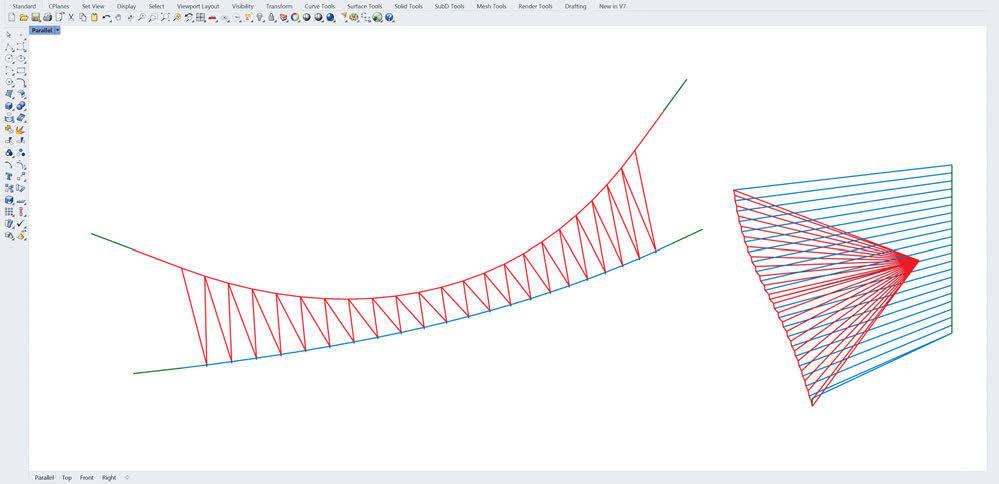
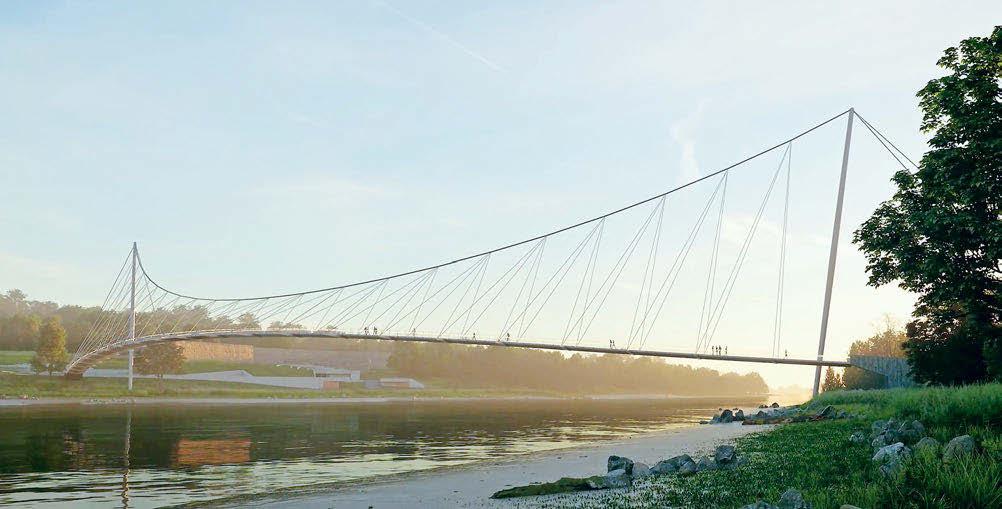
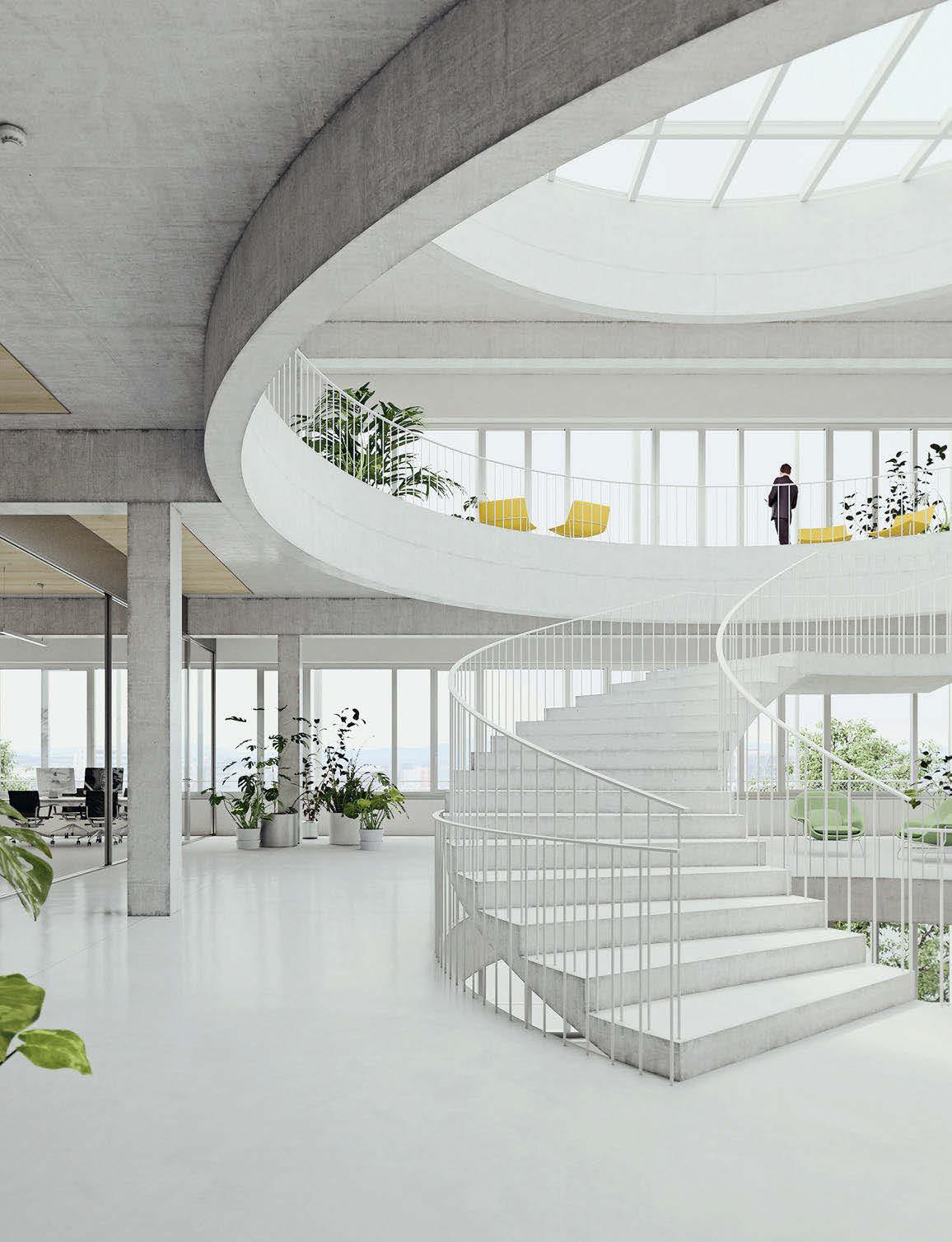
1 Saint, A.: (2005) “Architect and Engineer: A Study of Construction History,” Construction Histor y, 21, p. 24. LEFT PAGE Project Rosental-Mitte
Lab Building, House 6. Basel, Switzerland, 2029. Architecture: Karamuk Kuo Architects; Structural design and engineering: Schnetzer Puskas
STRUCTURING SPACE
For most of the history of construction, the question of concealing or exposing structure was never a concern. Material was load-bearing and architecture was an expression of that logic. What was structural was also for the most part architectural. The masonry construction that dominated the civic architecture of our Western built heritage and the timber construction of the Eastern heritage were equally direct in their application of material strengths and properties to the shaping of space. In fact, elements that appeared to be decorative or ornamental were often geometric efforts to structurally reinforce or optimize architectonic ambitions. Examples include the waffling of the Pantheon’s concrete dome, the squinches in Islamic mosques, the buttresses of gothic cathedrals, or the dugong brackets of ancient Chinese timber construction. These elements negotiated structure, geometry, and expression while giving identity to an architecture that was grounded in a certain material constructive system. It was a system that made scant distinction between architecture and engineering. Today, the tectonic question is returning to the fore. In the face of pressing issues like climate change and resource consciousness, the role of structure in architecture can no longer be that of a sidekick. When we consider how to build sustainably and how to maximize the longevity and durability of our built resources, the primary structure of an architectural design cannot be ignored.
The separation of architecture and engineering is a modern invention, one that only took place during the final two hundred years of the thousands of years of our history of constructing objects. As new technologies forced increasing specialization during the Enlightenment and the subsequent Industrial Revolution, the bifurcation of the disciplines seemed both a matter of pragmatism and progress. 1 However, the unfortunate result of that disciplinary split is the rather oversimplified typecasting of architecture as an aesthetic discipline and engineering as a technical one, whereas we all know that it is far more complex than that.
If we look at two of the most misunderstood protagonists of our modern times – Mies van der Rohe and Antoni Gaudí [PAGE 128] – we will realize that things are not always what they seem: that elements that seem to expose are in fact concealing and elements that seem to conceal are in fact revealing. Mies is often considered a minimalist who works with structure to reveal its material honesty and performative truth, while Gaudí is considered excessive and flamboyant, his works dripping with seemingly frivolous ornamentation.
When we look closer, however, we would realize that both are in fact toying with us. Mies, with his penchant for using structural profiles, uses them even when they are in fact not necessarily needed. Instead, they are deployed to create a certain visual effect – an impression of thinness or weightlessness. This was the case with the structural profiles that articulate the curtain wall of the Seagram building. The technology of the curtain wall had evolved to the point that these structural profiles were in fact not
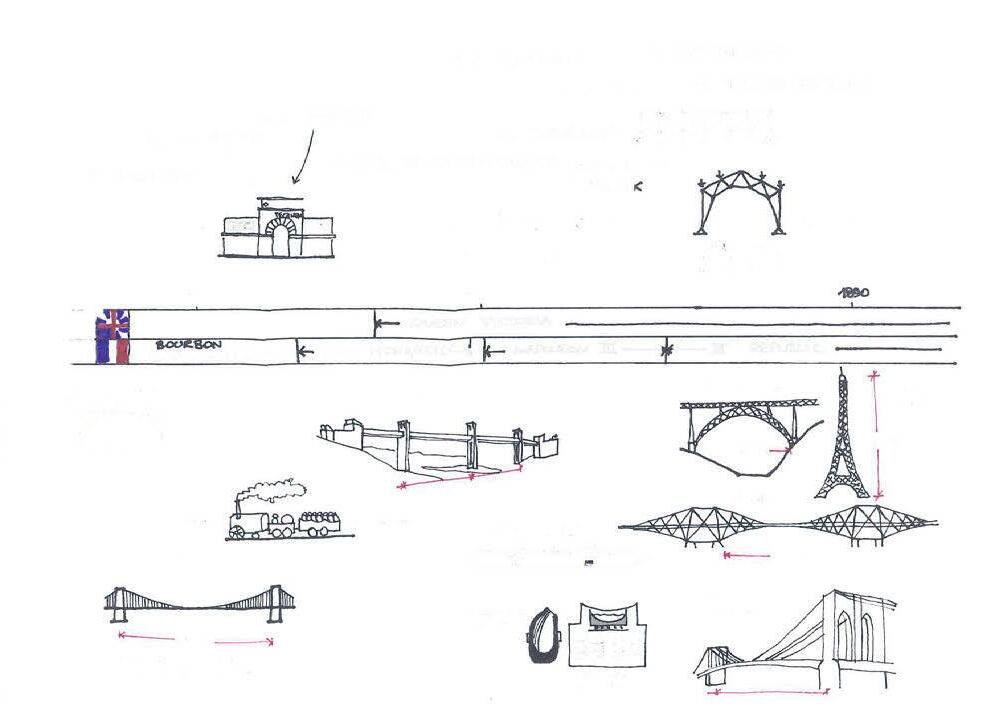
TULLIA IORI
TELL ME, PROF., WHAT IS THE USE OF THE HISTORY OF CIVIL ENGINEERING?
“Tell me, daddy. What is the use of history?” is the incipit of Marc Bloch’s famous book The Historian’s Craft. I invite you to read it for the general answer.
With regard to the history of civil engineering, I would like to simplify the problem by telling three stories, about three fictional engineers who lived in the nineteenth century, in the twentieth century and in the first century of the new millennium (predicting the future can only be a conjecture but, as a historian, I accepted one of the most popular lines in futurology research, predictive history, with constant speed, no acceleration and no technological singularity).
The first story is about Charles [PAGE 146] . According to his diary: “I was born in 1810, in France. My family was rich and in 1830 I attended the École Polytechnique, the best engineering school in the world at that time. My mathematical analysis professor was Augustin-Louis Cauchy and Claude-Louis Navier taught mechanics. At that time, teaching bridge construction meant teaching masonry bridge construction. The textbook was decades old, full of Ancient Roman bridges examples. Around 1820, Marc Seguin invented wire suspension bridges. In 1826 Navier tried to build one suspended bridge over the Seine but he failed. What an embarrassment for the École!
I wasn’t interested in suspended bridges – they seemed to me medieval, like drawbridges. Instead, I preferred to design bridges for railroads, the new superfast way of connecting places. I admired George and Robert Stephenson, who completed the first railroad between Liverpool and Manchester in 1830. As soon as I graduated, I moved to England to join my uncle. Stephenson hired me and I managed many construction sites. Then, in 1846, he involved me in the design team for the Britannia Bridge, a continuous wrought-iron beam 140m span. What I had studied at the École was not enough. To understand the behavior of the continuous beam, we tested a scale model, and it worked fine. Then, a few years after the inauguration, a classmate of mine, Benoît Clapeyron, demonstrated the “three moment theorem.” After him came many scholars devoted to understanding statically indeterminate structures – the big calculation dilemma of that period –and they fixed it: they just added a condition – the minimum work – and everything was solved. The solution to the big question was in plain sight, but only Maxwell understood it in 1856!
In the meantime, I decided to move back to France. For a few years, I designed compressed-air foundations for bridges, a new technique for bridge foundations in deep water. I designed the metal caissons, but I never went down into the caisson: the workers were sick after returning to the surface and many of them died. A few years later, a doctor figured out why workers were getting sick and how to prevent it – the compressed air technique spread throughout the world and completely transformed methods of building bridges.
Then, I met Gustave Eiffel. He was thirty-four when he founded his company and he hired me: I had a lot of experience in construction and he needed someone older to manage his team. He hired young engineers from
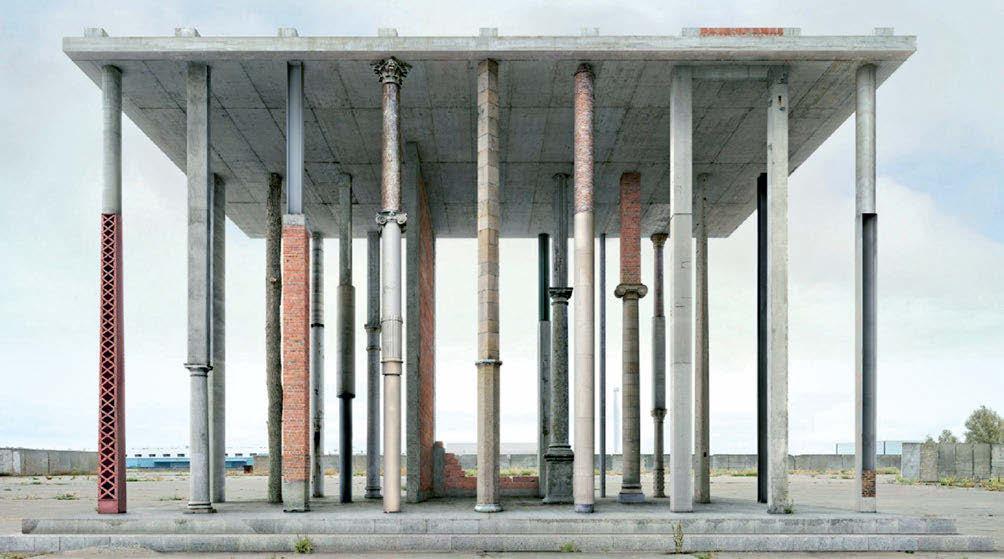

cient as possible in order to achieve maximum economic savings. However, the price of this was the abandonment of the concept of the long-term persistence of a building, a concept that had guided the builders of outstanding structures in the past. It appears that even mathematical tools, if used – as I believe they have been in many cases – to exclude the parameter of the duration of a structure over time, have contributed to the dominance of an optimization principle that fits perfectly into the logic of economic savings in the pursuit of profit (of materials, time, labor, etc.). At present, it is urgently necessary to reconsider the design of any structure in light of the parameters of time – which means that the resistance of parts should no longer be considered to be purely static. The structure should probably be articulated once again into permanent and temporary parts, depending upon function over time. In short, it is in my opinion necessary to reconsider the so-called scientific foundations of the discipline and identify parameters that allow transforming the static concept of resistance into that of persistence, to define a new idea of sustainability.
AM I agree with you, but I am not fully in accord with the final part of your answer. The engineering we still conceive of today is a product of the Industrial Revolution. At that time, the goal was to optimize structures because steel, a new material, was being used for the first time. Steel was expensive and not easily available – unlike stone and wood, readily accessible back then. This tradition has persisted over time. You mentioned the French school – hence Eiffel, obviously – but I would also include the British and American schools. We are still the products of these schools. However, I do not wish to deny this tradition because I believe it is still relevant. In fact, it is becoming relevant once again due to the emergence of environmental problems. Instead, my criticism relates to the fact that starting from the 1970s, when everything was easily available and low-cost, and the material was no longer expensive, it was the labor force that began to become costly. During this time, we started to waste materials.
RG Certainly, dear Aurelio; yet it would appear to be essential today to continue questioning the foundations of scientific knowledge – and more, to verify whether it is possible to update its parameters based on contemporary conditions (at least, this is what is happening in my research). I believe that we should question the origins of the “theory of structure.” How much have the rules of that science been derived from principles of abstraction that ended up being identified with the success of artificial materials from the 19thand 20th-century industry? We should ask ourselves whether the foundations of those rules are still relevant, because the system we have produced using those
rules may lead us to exclude more hybrid structures which could exhibit much more complex behaviors and are less controllable by the rules of a mathematics that, moreover, seems to have become increasingly used as the support for engineering learning, the reverse of what Nervi had hoped for. Perhaps what we need is a new Nervi, but one no longer bound by being the entrepreneur of his own, unique material.
AM However, a misconception leads to the belief that minimizing materials is merely the result of mathematical optimization. Instead, I believe that two more obvious counterexamples are Nervi and Maillart, both of whom were building entrepreneurs and both of whom focused their minimization of materials not so much on calculation but instead on intuition and structural conceptualization. In my opinion, the opposition between mathematics and intuition is wrong. I see them as two elements essential to engineering. In my view, engineering works best when one component does not outweigh the other.
PD It should be noted, however, that the education of civil engineers almost always focuses on structural analysis, not so much on structural design. How can young engineering students be better acquainted with the fundamental topic of the conceptual design of structures?
AM Structural analysis is an absolutely necessary but not sufficient component. Two other fundamental components are required in order to complete the training of an engineer. Firstly, a course on the history of construction is essential. This is crucial because it allows students to understand the extent to which the creative-intuitive aspect has contributed to producing remarkable works and to making the engineering profession beautiful, stimulating, and interesting. Secondly, there should be a significant increase in the quantity, number, and quality of projects that students work on during their course.
RG I have the impression that engineering schools are increasingly avoiding teaching design. The recent profiles of professors in engineering schools belong to a universe that is closely linked to the realm of mathematical abstraction, to experimentation that seems to be stuck down the blind alley of the academy, as Nervi feared. There is no doubt that we need to raise the question of design again, as you have argued, and take into account our knowledge of the origins and history of our discipline, as is your hope. Moreover, I believe it is necessary to reconsider what the engineer of the 21st century should be designing during their educational learning process.
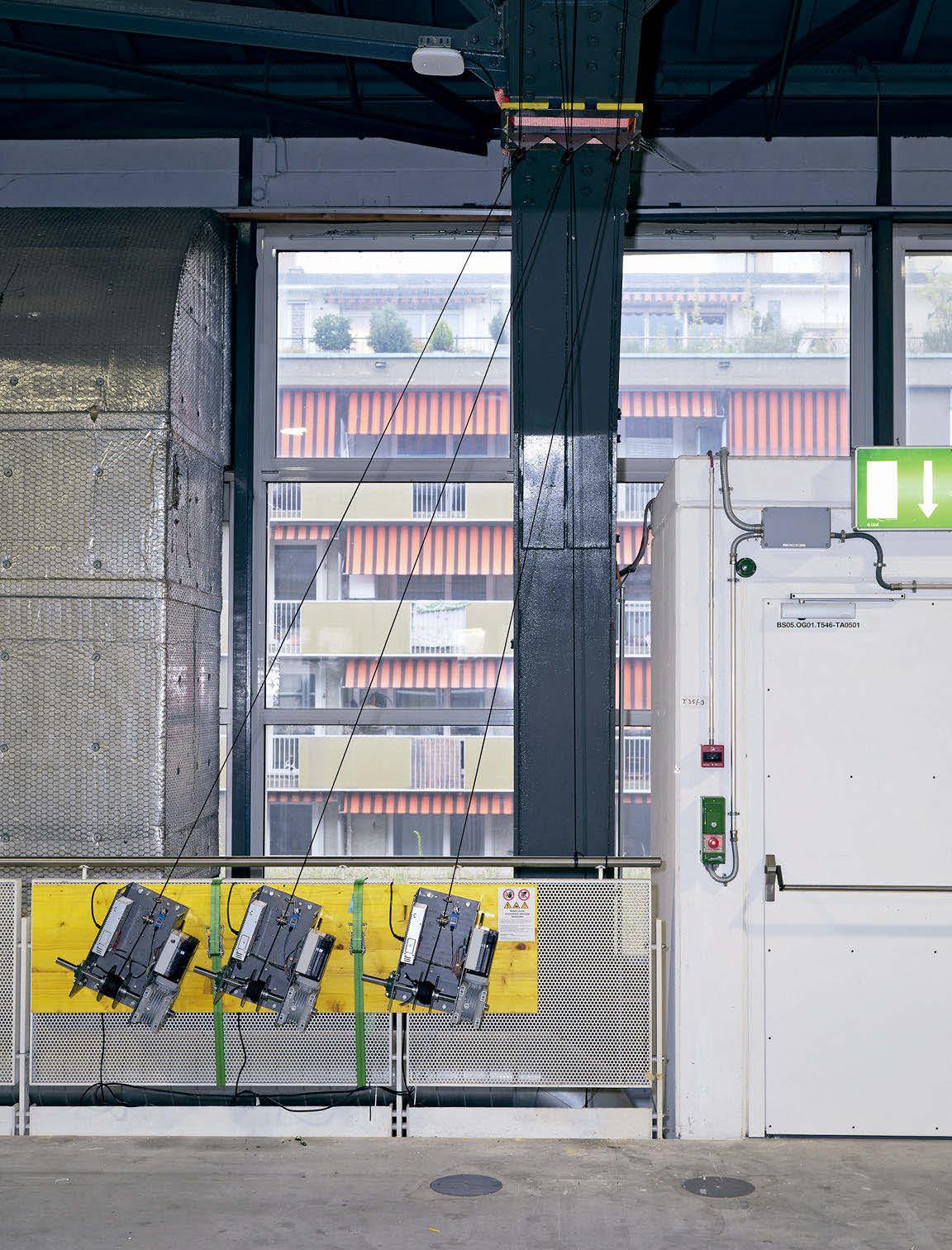
THE INTERDISCIPLINARY NATURE OF ARCHITECTURE: CHALLENGES AND OPPORTUNITIES BETWEEN ACADEMIA AND PRACTICE
ELLI MOSAYEBI IN CONVERSATION WITH FEDERICO BERTAGNA AND PATRICK OLE OHLBROCKOO Let’s start with a question on the interaction between architects and structural engineers: what role do structures play in your daily work as an architect? Is there a difference in the way you interact with structural engineering as a discipline in academia compared to practice?
EM In 2019 we collaborated with Joseph [Schwartz] in our design studio at ETH, and that was very productive. I really experienced Joseph as an “architect” with a specific focus on structure, so to speak. This was an interesting and somewhat new experience for me. On a day-to-day basis, we build a lot of residential buildings in the Zurich area. With the limited spans of houses, the structural aspects of the projects are often not that challenging. The collaboration revealed how much more is actually possible in terms of collaboration.
Incorporating engineering aspects into a design process is a unique way of developing and explaining form, which is determined by factors that we as architects give too little attention. And yet a large part of the CO2 is emitted with the structure and thus in the poorly dimensioned statics. Refinement in the structure thus is not only an aesthetic criterion, but also an ecological one.
OO What do you see as the main features of a fruitful interdisciplinary design session?
EM The best projects are often the result of a dynamic process of negotiation between science, art, and architecture. From the natural sciences (such as structural engineering or building physics) come the fixed components, usually in the form of immutable theorems. This does not mean that they cannot be experimented with, but their rules preexist in a certain way. The artists bring in other points of view, which are characterized by positions and interpretations. They are definitely negotiable and more open. Combining both aspects and creating a meaningful whole is the attraction of architecture.
Trusting the other disciplines and wanting to experiment is thus essential.
FB One crucial element is finding a common language between professionals from different disciplines. This very much lays the ground for a good collaboration. It seems that you have found effective ways to do that both in practice and in academia, where you always invite professors from different disciplines to contribute in the design studios.
EM The “trick” is not to have a predefined common language, but to be open to new languages. Each design studio serves both to teach the students and to broaden our own horizons as a teaching team. Looking back, I can say that each collaboration was also a memorable experience for us. As amateurs, we found ourselves learning new principles and applying them to projects. The intensity of these experiences has left us with fond memories and a desire for new ones.
FB Academia is the perfect testing ground for this kind of experiment. This might be different in practice, but how different would it be, precisely?
EM I feel that these collaborations take us to a different point. Perhaps we are even further ahead in science than we are in practice, because practice is generally very slow and ambivalent about new findings for a variety of reasons. In practice, when you try to convince clients of certain issues, they often refuse because they are afraid of the risks they have to take. In academia you can be much more radical. For me, the relationship between practice and academia has changed over the last ten years. I used to feel that I was bringing my knowledge from practice to academia, but that feeling has become reversed.
OO At the Chair you developed a Thesaurus, 1 which together with “12 theses,”2 outlines the philosophy of the Second Modernity. One of the keywords is experimentalism . For engineers, this word might have conflicting connotations: on the one hand, experiments
1 https://mosayebi.arch.ethz.ch/en/thesaurus.
2 https://mosayebi.arch.ethz.ch/en/twelve-theses.
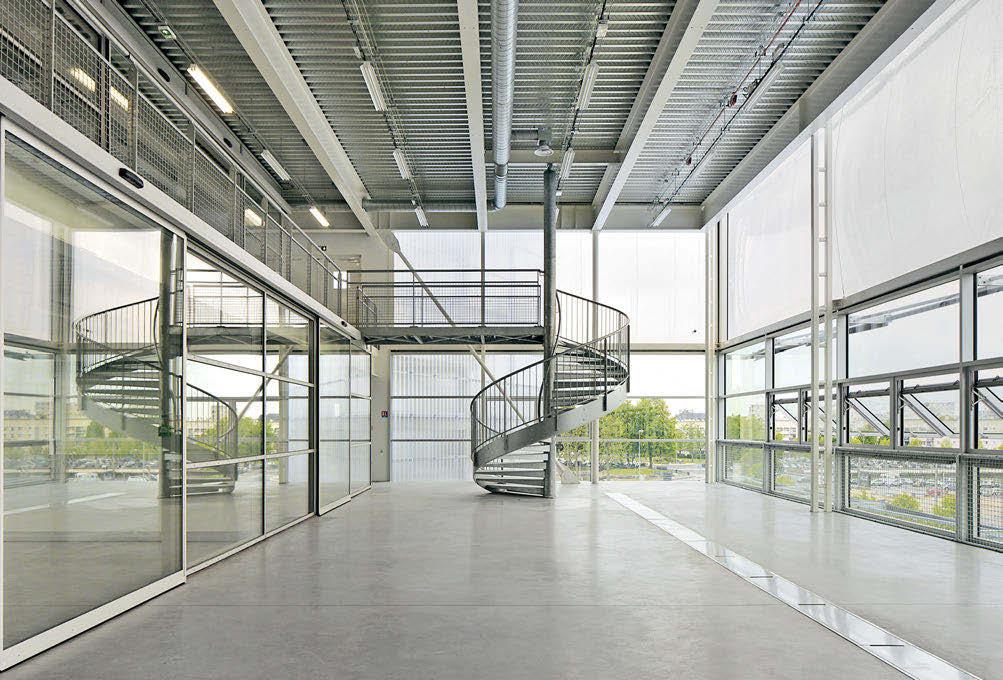
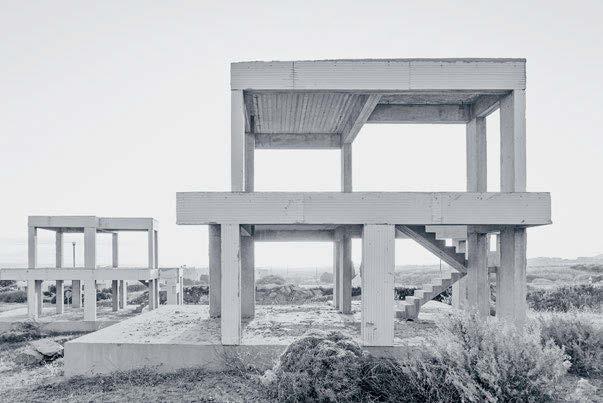
13 Van Reeth, B.: (2013) “Good architecture?”
OASE 90, p. 42.
14 Ingold, T.: (1993) “The Temporality of the Landscape,” World Archaeology 25(2), pp. 152–174.
LEFT PAGE, TOP Mixed-use laboratory building, designed to constantly adapt, New Generation Research Center, Caen, France, 2015. Architecture: Bruther Architects
LEFT PAGE, BOTTOM Ruin as shell of the new, Naxos, Greece, 2023
es itself from the current building in terms of its overarching significance. As the most rigid part of the building, it belongs more to the outside, to the urban environment, than to the inside, to its current use. From a macro perspective, the supporting structure becomes an element of the neighborhood and urban development, containing a spectrum of uses and enabling appropriations. These respond to those of the neighbors, allowing continuity between buildings and controlling them through their own internal order. The orientation of the building and thus the order of accesses can change, while users and user combinations can fluctuate and floor plans can shift owing to fit-outs or new cross-connections. The structures of buildings can thus be read as a meta-landscape that determines usability and relationships, but can also be adapted at any time, and that has an effect both internally on its own spaces and externally upon its neighborhood. Following Brand’s model of shearing layers – the almost permanent structure thus merges with the permanent site – it becomes an extended building site with all the preconditions for (further) building [PAGE 210, BOTTOM] .
The Belgian architect Bob Van Reeth has described changeable structures of this type as intelligent ruins. “A building is a possibility, is conducive, preferably taciturn, silent, is willing, liberates space, mediates. Building as intelligent ruins. […] Good buildings conceal daily use – they are stable and stubborn, obstinately distributive and (to echo Kant) ‘purposive without a purpose’. Therein lies the quality of their durability, or their cultural durability, which yields dignity. Expediency calls for the right scale, an extreme precision that leaves everything open that cannot be predicted.” 13 In this sense, the design of the building structure is not only the conceptual connective element of space, time and scale, but also the essential tactile ordering element that transcends the episodes of a place’s existence: uses, materials, the flow of people through it – all of these condense, grow, and reinvent themselves anew.
Today, given the ongoing efforts to achieve sustainable architectures (and structures), we have some new requirements: namely, to meaningfully extend the use cycles of buildings and components. The structure can make a particular contribution to this by providing the framework for a constantly transforming urban landscape, which is always only temporary and thus bears traces of previous uses. 14 In addition to the urgent discussions concerning sustainable materials and the expected focus on reusable building components, we also urgently need to rethink the currently far-too-narrow concept of durability for structures and function. The structural engineer can contribute in ways that are far more profound than merely making structures more slender as well as connections more flexible. After all this can lead to differentiated structures – i.e., link them to spectra of use and changing contexts, and thus gain an understanding of them as easily appropriated, intelligent ruins. In this, support is required of those who conceptualize the building and those who determine trajectories of the city and the neighborhood. Structures are a natural part of architecture: neither one of the two can make sense without the other, nor can it be long-lasting.
WILLIAM BAKER is a Consulting Structural Engineering Partner at SOM. Throughout his career, Baker has dedicated himself to innovative structural engineering design and research, with expertise across a variety of structures around the world. He developed the “buttressed core” structural system for the Burj Khalifa, the world’s tallest human-made structure, as well as the Broadgate Exchange House, a 10-story office building with an iconic structure that spans a 78-meter-long rail yard in London. Baker has also advanced a range of engineering collaborations with architects and artists from around the world, including projects such as the Fishers Island Residence single-family home in New York, with architect Thomas Phifer and Partners; and Skyspace, a permanent art installation with artist James Turrell at Rice University.
ALESSANDRO BEGHINI is a Structural Engineering Senior Associate Principal with SOM. Alessandro works to develop innovative structural design for projects in coordination with the architectural and building services teams. Recent projects include the 530m tall Tianjin CTF project and collaborations with Atelier Peter Zumthor for the LACMA Museum and with Janet Echelman for Current. Throughout his career, Alessandro has been conducting research in the field of optimal structural topologies and development of innovative methodologies for structural analysis. To this end, he maintains ongoing collaborations with academic institutions and has served as Adjunct Professor at Northwestern University.
ALEJANDRO BERNABEU , Ph. Civil Engineer and Professor at the School of Architecture (UPM), is an expert in structures of singular buildings with more than 20 years of experience. CEO of Bernabeu Ingenieros, he has developed projects worldwide working in collaboration with well-known architects such as Herzog & de Meuron, David Chipperfield, Dominique Perrault, Nieto Sobejano, Rafael de La Hoz or Burgos & Garrido. His work focusses on structural design and the relationship between structure and architecture. He has been awarded with the IABSE prize.
FEDERICO BERTAGNA is a post-doctoral researcher and lecturer at the Chair of Structural Design led by Prof. Dr. Jacqueline Pauli at ETH Zurich. Originally trained as a structural engineer, he later obtained a doctorate from the Department of Architecture at ETH Zurich under the supervision of Prof. Dr. Joseph Schwartz. His research focuses on geometry-based graphical methods as a way to establish holistic design approaches that reconcile spatial, structural, and environmental aspects.
KAI-UWE BLETZINGER works in the field of computational mechanics for static-dynamic analysis, simulation and optimization and their integration into the digital design chain. He studied civil engineering in Stuttgart and Calgary (Canada) and received his PhD in 1990 in Stuttgart. In 1996, he was appointed to a professorship at the University of Karlsruhe before joining the faculty of TUM in 1999. He is a member of numerous committees for basic and applied research, European standardization, the German Research Foundation, and the Bavarian Construction Administration’s examination board for the recognition of test engineers
GIULIA BOLLER is a scientific assistant and postdoctoral researcher at the Chair of the Theory of Architecture at ETH Zurich. She is both an engineer and an architect. Her research interests lie at the interface between history, architecture and structural engineering disciplines. In 2022 she completed a doctoral thesis at the Chair of Structural Design at ETH Zurich. She gained professional experience at Renzo Piano Building Workshop. Giulia graduated with honors in Building Engineering-Architecture at the University of Trento (Italy) in 2015.
JÜRG CONZETT studied civil engineering at EPF Lausanne and ETH Zurich. After receiving his diploma in 1980 he worked for several years in the office of architect Peter Zumthor. In 1988 he started his own office as a structural engineer. Today, the firm Conzett Bronzini Partner in Chur (Grisons) investigates existing constructions and designs new bridges and buildings, often in collaboration with architects.
PIERLUIGI D’ACUNTO is an Assistant Professor of Structural Design at the School of Engineering and Design of the Technical University of Munich (TUM). His research explores the convergence of architecture and structural engineering through computer-aided design and emerging construction technologies. Pierluigi graduated with honors in Building Engineering-Architecture from the University of Pisa in 2007 and received a Master of Architecture from the Architectural Association in London in 2012. In 2018 he completed his doctorate with distinction at ETH Zurich.
CATHERINE DE WOLF is the director of ETH Zurich’s Chair of Circular Engineering for Architecture (CEA), where she leverages digital innovations to promote a circular economy in the built environment. With a dual background in civil engineering and architecture and a PhD in building technology from MIT, Catherine has contributed to real-world projects globally and collaborated with organizations like the European Commission and Arup. She is a faculty at EMPA, ETH AI Center, the NCCR on digital fabrication, and Design++.
